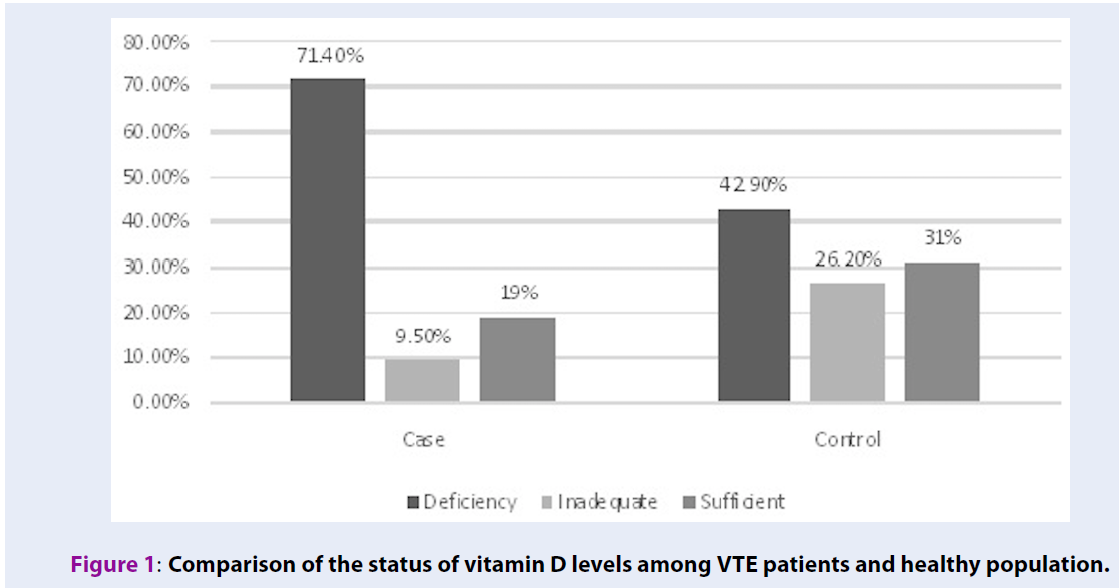Effect of Vitamin D deficiency in lower extremity and pulmonary venous thromboembolism
DOI:
https://doi.org/10.15419/bmrat.v6i4.535Keywords:
Deficiency, PTE, vitamin D, VTEAbstract
Introduction: Vitamin D deficiency increases inflammation and dysfunction of pancreas betacells, resulting in atherosclerotic disorders, cerebrovascular disorder, and CVDs.
Methods: In the present cross-sectional study, vitamin D was evaluated in the plasma of 42 patients with lower extremity DVT or PE, as well as 42 healthy controls. Using the chemiluminescence assay, the plasma vitamin D levels were determined. After collection, the blood samples were examined within 60 minutes. Vitamin D levels were classified as sufficient, insufficient, and deficient (> 30 ng/mL, 20- 29 ng/mL, and < 20 ng/mL, respectively).
Results: The prevalence of deficiency in vitamin D was higher in the cases than the controls. The two groups were significantly different regarding vitamin D levels (p = 0.024). Based on the vitamin D classification, deficiency was reported in 30 (71.4%) patients and 18 (42.9%) controls.
Conclusion: Our findings indicated that VTE patients had lower concentration of vitamin D, and the correlation between VTE and vitamin D deficiency was confirmed.

Downloads
Published
Issue
Section
License
Copyright The Author(s) 2017. This article is published with open access by BioMedPress. This article is distributed under the terms of the Creative Commons Attribution License (CC-BY 4.0) which permits any use, distribution, and reproduction in any medium, provided the original author(s) and the source are credited.
